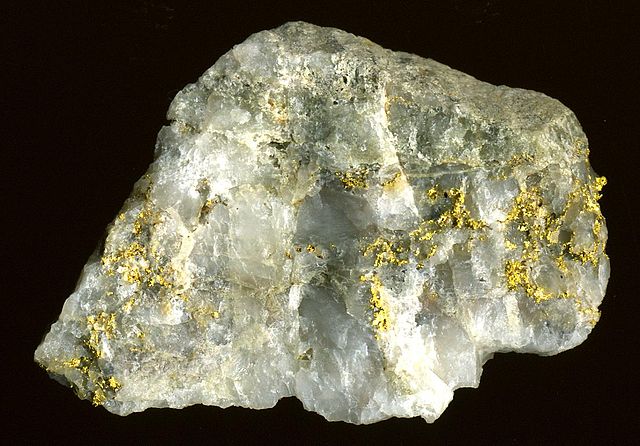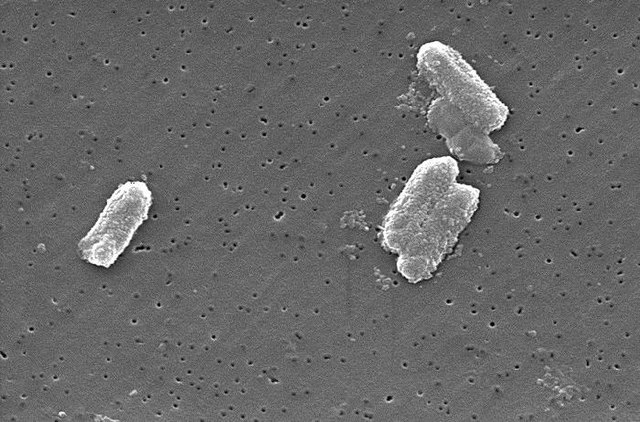Various theories of ore genesis explain how the various types of mineral deposits form within Earth's crust. Ore-genesis theories vary depending on the mineral or commodity examined.
High-grade gold ore from the Harvard Mine, Jamestown, California, a wide quartz-gold vein in California's Mother Lode. Specimen is 3.2 cm (1.3 in) wide.
High-grade (bonanza) gold ore, brecciated quartz-adularia rhyolite. Native gold (Au) occurs in this rock as colloform bands, partially replaces breccia clasts, and is also disseminated in the matrix. Published research indicates that Sleeper Mine rocks represent an ancient epithermal gold deposit (hot springs gold deposit), formed by volcanism during Basin & Range extensional tectonics. Sleeper Mine, Humboldt County, Nevada.
Citrobacter species can have concentrations of uranium in their bodies 300 times higher than in the surrounding environment.
Tunicates such as this bluebell tunicate contain vanadium as vanabin.
Ore is natural rock or sediment that contains one or more valuable minerals concentrated above background levels, typically containing metals, that can be mined, treated and sold at a profit. The grade of ore refers to the concentration of the desired material it contains. The value of the metals or minerals a rock contains must be weighed against the cost of extraction to determine whether it is of sufficiently high grade to be worth mining and is therefore considered an ore. A complex ore is one containing more than one valuable mineral.
Manganese ore – psilomelane (size: 6.7 × 5.8 × 5.1 cm)
Lead ore – galena and anglesite (size: 4.8 × 4.0 × 3.0 cm)
Granitic pegmatite composed of plagioclase and K-feldspar, large hornblende crystal present. Scale bar is 5.0 cm
Piece of kimberlite. 11.1 cm x 4.5 cm








